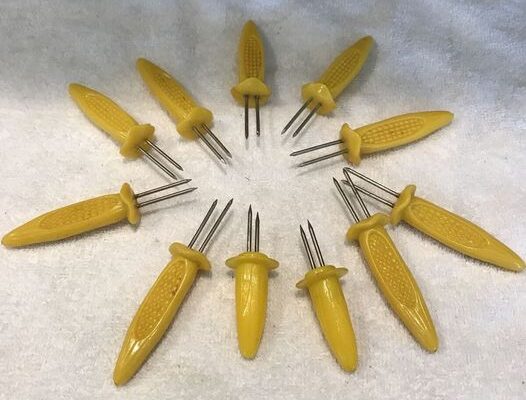History of Corn on the Cob Holders Corn on the cob holders, also known as skewers, have a rich history dating back to the early 19th century when corn became a staple food in many parts of the world. Initially crafted from wood or bone, these skewers were essential for eating corn without burning one’s fingers or losing grip on the slippery cob.
Usage and Design Evolution Originally simple in design, corn on the cob holders have evolved over time to offer both functionality and aesthetics. The early versions featured two prongs, often made from durable materials like metal or wood, ensuring a firm grip on the corn cob. As culinary tools advanced, so did the skewers, with modern designs incorporating ergonomic handles for comfort and safety during use.
Legacy and Cultural Significance Corn on the cob holders hold cultural significance, especially in regions where corn is a dietary staple. They are commonly used during summer barbecues, picnics, and outdoor gatherings, symbolizing shared meals and community. The holders also reflect craftsmanship, with vintage pieces often cherished for their durability and nostalgic appeal.
Modern-Day Utilization In contemporary kitchens, corn on the cob holders remain indispensable for serving and enjoying corn. Their practical design ensures that each diner can enjoy their corn without mess or inconvenience. Furthermore, modern variants include innovative features such as heat-resistant handles or themed designs that add flair to dining experiences.
The vintage corn on the cob holders skewers exemplify both functionality and tradition, reflecting their enduring role in culinary practices worldwide. As they continue to evolve with modern needs and styles, these holders remain an essential tool for enjoying one of nature’s simplest pleasures—freshly roasted corn on the cob.


